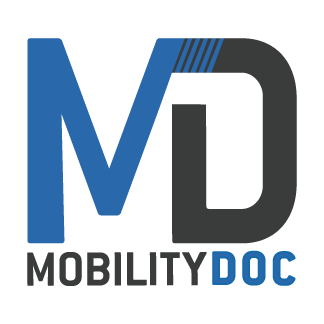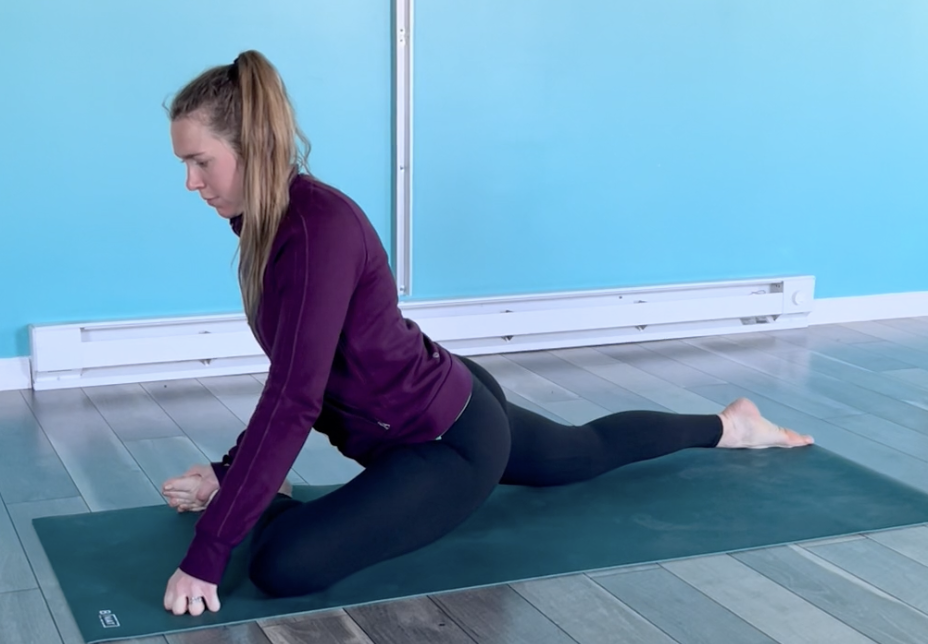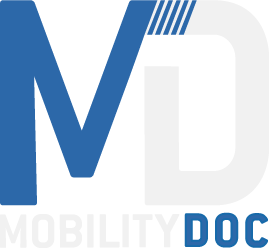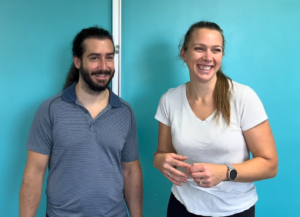So now here we are. (And if you’re not sure where we are, read blog 1.) I have a calf injury that requires time off from running. I recognize and accept that I need to take time off. So now what do I do? After the initial moments of despair, I took my knowledge and experience and applied it. Today, I want to talk about 1) what I’m doing to address my pain and 2) how I decided what to do for my calf injury treatment.
A Multi-Factor Approach
To address my pain, I’m taking a multi-factor approach. First, I’m taking time off from running to let the bone and muscle heal. To facilitate healing, I’m righting my wrong of not doing enough recovery work. I’m working on the mobility of my lower leg and foot, but I’m also working up the chain to my hip (more on that later). Additionally, I’m getting treated by John, because, simply, there are certain things I can’t do as effectively by myself than if someone else does it. The decisions I’m making for my calf injury treatment plan are based on my knowledge and experience as a doctor of physical therapy. It’s highly recommended that if you’re experiencing something like what I’ve described that you seek medical advice. In my case, I’m just finally taking my own advice 🙂 Let’s explore each of these factors in my approach to addressing this injury.
Calf Injury Treatment
Regarding time off, I’m taking at least 4ish weeks. That’s pretty standard when you have bone involvement and generally the time required for bone to heal. I definitely had bone involvement, because after 4-5 days off, I stopped having radiating pain at rest. Luckily, I have continued to walk (a lot). I was able to do this, because my pain didn’t escalate that much. In some cases, it’s necessary to totally unweight the leg or wear a boot. Again, I’m just relaying my personal experience.
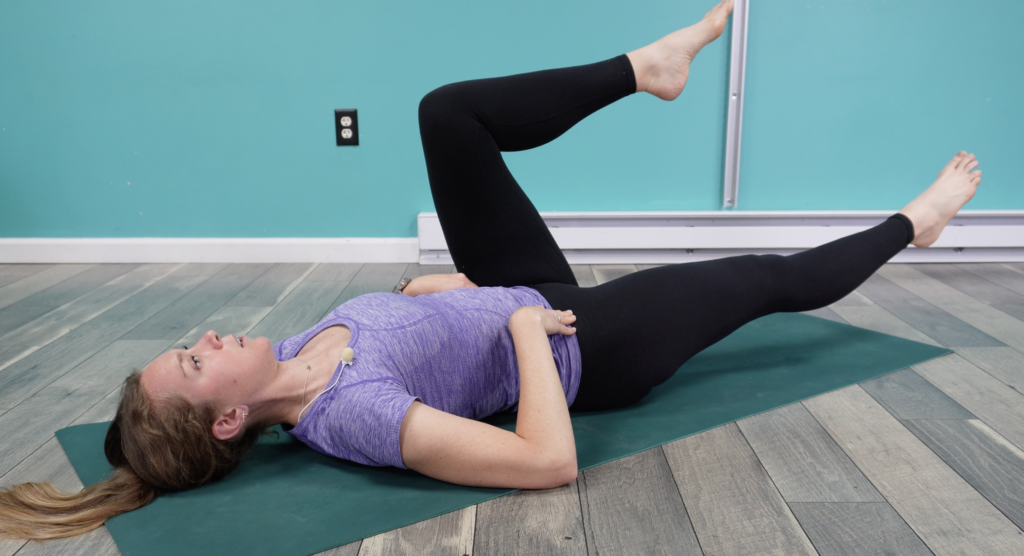
In addition to the rest, I’m actively facilitating the healing. I always say that just because time lapses, it doesn’t mean your issue is getting better. I needed to address the dysfunction of the muscle. This will allow the calf to not pull on the bone as I walk (and eventually run). I like expediting the healing process by alternating between foam rolling and stretching. If you’ve been a patient of mine, you know this. Foam rolling helps untie the “knots” in the muscles and stretching helps to lengthen the muscle. My calf injury treatment involves a combination of these 2 exercises for 3 rounds (what I like to call a couplet).
My Calf Injury Treatment Couplet:
– Exercise 1: I foam roll my whole calf for 1 minute.
– Exercise 2: I do my favorite dynamic calf stretch for 30 repetitions.
– Exercise 1: I hold my leg over the foam roller, placing the other leg over for pressure. I then move my ankle back and forth. This acts as an active release for the muscle.
– Exercise 2: I go back to the dynamic calf stretch and do 30 more repetitions.
Repeat for Round 3
I do this after every workout.
Watch this video on how to foam roll your calf:
Working Up the Chain
To expand on the relationship between the calf and hip, I’ll briefly (for me) explain one of the most common mechanical dysfunctions that I see in runners. Simply: some combination of hip, knee and ankle immobility/prior injury lead to weakness, asymmetries, and compensatory overuse in the leg. This can manifest in a variety of ways. Again, this is where a qualified provider can help. I’ll detail myself only.
I’ll start by reiterating that asymmetries are totally normal. This is because we don’t do perfectly symmetrical activities all day. Driving is asymmetrical; using your phone or laptop is asymmetrical; sitting (comfortably) is asymmetrical. We have preferred ways of moving and a history of moving a certain way. These patterns are seen in the other ways we move. The asymmetrical patterns open us up to problems that can lead to injury. Particularly with something like running, specifically on a road. You’re taking the same slightly asymmetrical step for tens of thousands of steps, day after day.
My Asymmetries
My right hip has always been my more inflexible and weak side. Why you ask? I didn’t have any injuries, but much like I detailed above, I believe things like driving and sitting with crossed legs are whats causing this asymmetry. When I teach our MDFit class, I’m forever talking about what my right side doesn’t do as well as my left. Its inflexibility leads to weakness. Read that again: inflexibility can make a muscle look weak. My right hip flexors and quads are tighter. Those pigeon and piriformis stretches are always harder on my right side. These inflexibilities make my glute look weak. I won’t go too far into this (arguably I already have 😆) but there’s too much resistance in certain muscles to allow others to fire the way they should. I’m left with a right glute that doesn’t fire the way the left one does.
Now you may be wondering why this glute even matters. Well, you have two main muscle groups for propulsion, your glutes and calves. When your glutes aren’t carrying their weight, your calf has to take over. That’s what happened to me. That’s why I’m not only foam rolling and stretching my calf; I’m working on the flexibility and strength of my hip as part of my calf injury treatment. I’ve been going through some of the hip/core primers that we have on Mobility-Doc YouTube. I do at least one a day in addition to the mobility work. Click HERE for my favorite running primer that I’ve been using to help make sure when I start running again, my body will be ready.
The Help of Others
Clearly this is quite the process with a lot of moving parts. That’s why I’ve enlisted the help of John. He’s been doing some manual therapy, like soft tissue mobilization, myofascial release, and graston (muscle scraping) throughout my calf, shin, quad, hip flexor, and glute. Then things like ankle and hip mobilizations are layered in. This is all to say that with treatment I can expedite the process of restoring my mechanics. Bone still takes 4-6 weeks to heal, but I am making sure that I’m addressing the excess muscular stress on the bone.
I know I spoke about a lot, and these are all things that I talk about with my patients. I encourage you to ask any questions, because it’s not as simple as saying, “rest for 4 weeks.” If you have questions please reach out to me on any of our socials either by tagging us or sending a direct message. I’m happy to answer any questions you may have about my process and the exercises I’ve incorporated into my calf injury treatment.
Watch Part 2:
My recovery isn’t done. I’m excited to share what I’m doing in the meantime and how I’ll transition back to running. Next week I want to spend a bit more time talking about my relationship with running, both physically and mentally. I’ve been examining it a lot in the context of my past and future training. I can’t wait to share what I find to get more out of my training. But more on that later. Thank you for taking this journey with me and I hope it can help yours too. If you have any questions don’t hesitate to reach out either on our website or via our socials.
MDRx - Runner Recovery Program
Don’t ignore your ache! If you’re training for a race and you can feel something starting to get funky, take care of it before it becomes a problem! Try our MDRx 4 Week Runner program. You will strengthen and mobilize targeted areas of your body to keep you logging those miles.
